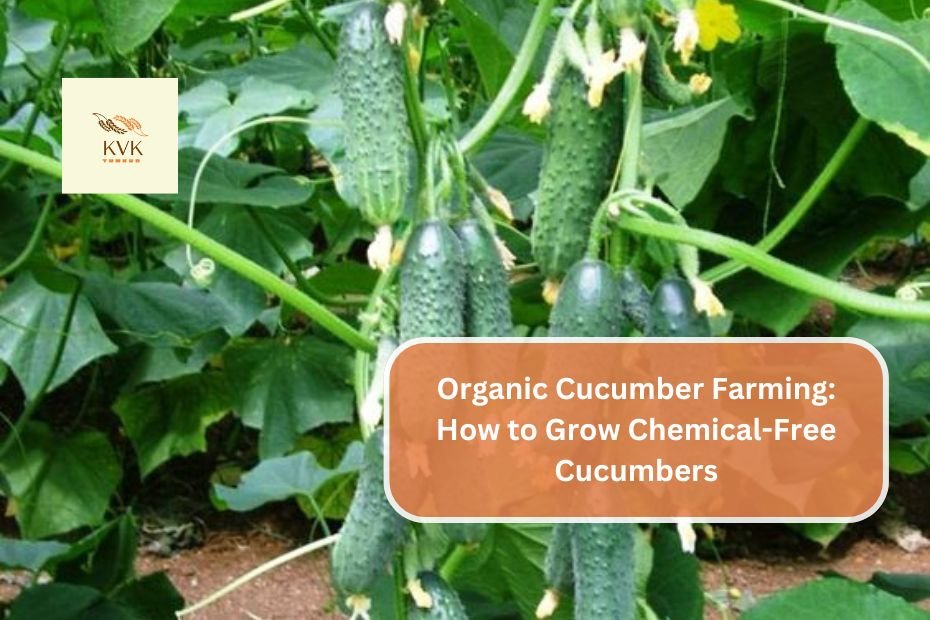Growing cucumbers organically is a rewarding endeavor that not only produces delicious and nutritious fruits but also promotes environmental sustainability. Here’s a comprehensive guide on how to cultivate cucumbers without the use of synthetic chemicals.
1. Choosing the Right Variety
Select cucumber varieties that are well-suited for organic farming. Some popular organic cucumber varieties include:
- Marketmore: A reliable slicing cucumber known for its disease resistance.
- Lemon Cucumber: A unique, round variety with a mild flavor.
- Pickling Cucumbers: Such as Kirby, ideal for making pickles.
2. Soil Preparation
Healthy soil is the foundation of organic farming. Follow these steps to prepare your soil:
- Soil Testing: Conduct a soil test to determine pH and nutrient levels. Cucumbers prefer a pH between 6.0 and 6.8.
- Amendments: Incorporate organic matter such as compost, well-rotted manure, or vermicompost to improve soil fertility and structure. This enhances moisture retention and provides essential nutrients.
- Soil Solarization: Consider using soil solarization to eliminate pathogens and weeds by covering the soil with clear plastic for several weeks before planting. This method harnesses solar energy to heat the soil, effectively reducing harmful organisms .
3. Planting Techniques
Cucumbers can be grown directly from seeds or transplants:
- Direct Seeding: Sow seeds outdoors after the last frost when soil temperatures reach at least 60°F (15°C). Plant seeds about 1 inch deep and space them 12-18 inches apart in rows or hills (4-6 seeds per hill).
- Transplanting: If starting indoors, use biodegradable pots to minimize root disturbance when transplanting. Start seeds about 3-4 weeks before the last frost date.
4. Watering and Irrigation
Cucumbers require consistent moisture for optimal growth:
- Irrigation: Use drip irrigation to provide water directly to the roots while minimizing water on foliage, which helps prevent diseases like powdery mildew.
- Mulching: Apply organic mulch (straw, grass clippings) around plants to retain moisture, suppress weeds, and regulate soil temperature.
5. Fertilization
Organic fertilization is crucial for healthy cucumber growth:
- Organic Fertilizers: Use well-aged compost or organic fertilizers rich in nitrogen, phosphorus, and potassium. Bone meal, fish emulsion, or kelp meal can be excellent choices.
- Feeding Schedule: Fertilize at planting time and side-dress every few weeks as plants grow. Liquid fertilizers can be applied every two weeks during the growing season .
6. Pest and Disease Management
Organic pest management focuses on prevention and natural controls:
- Companion Planting: Plant cucumbers alongside companions like marigolds (to repel pests), beans (to fix nitrogen), and radishes (to deter cucumber beetles).
- Natural Pesticides: Use neem oil or insecticidal soap to manage pests like aphids and cucumber beetles. Homemade solutions like garlic or hot pepper sprays can also deter pests.
- Biological Controls: Introduce beneficial insects such as ladybugs or lacewings that prey on harmful pests .
7. Harvesting
Cucumbers are typically ready for harvest within 50-70 days after planting:
- Timing: Harvest cucumbers when they are firm, green, and reach the desired size (generally about 6-8 inches long for slicing varieties). Regular harvesting encourages continued production.
Conclusion
Organic cucumber farming is an effective way to produce healthy, chemical-free cucumbers while promoting environmental sustainability. By focusing on soil health, proper planting techniques, pest management, and regular maintenance, you can enjoy a bountiful harvest of delicious cucumbers throughout the growing season. Embracing organic practices not only benefits your health but also contributes positively to the ecosystem!
| HOME | CLICK HERE |
| CATEGORY | CLICK HERE |

